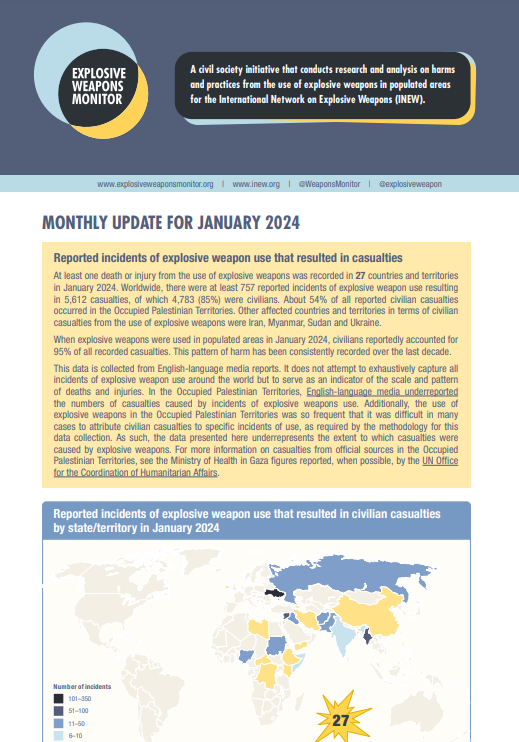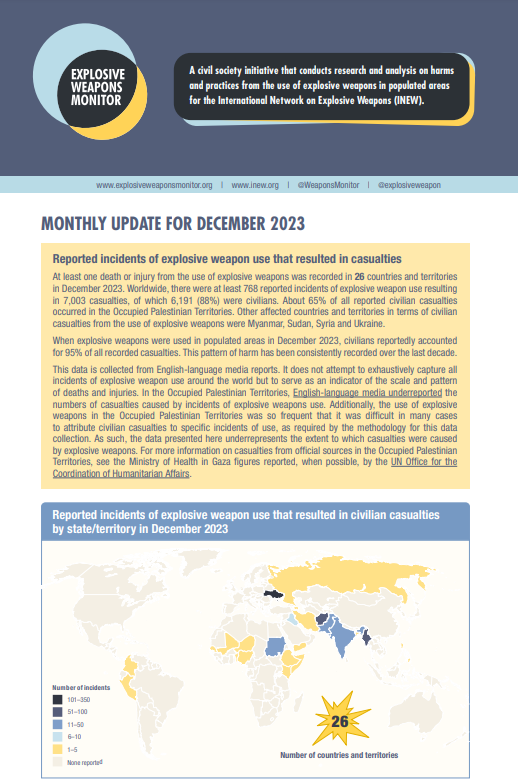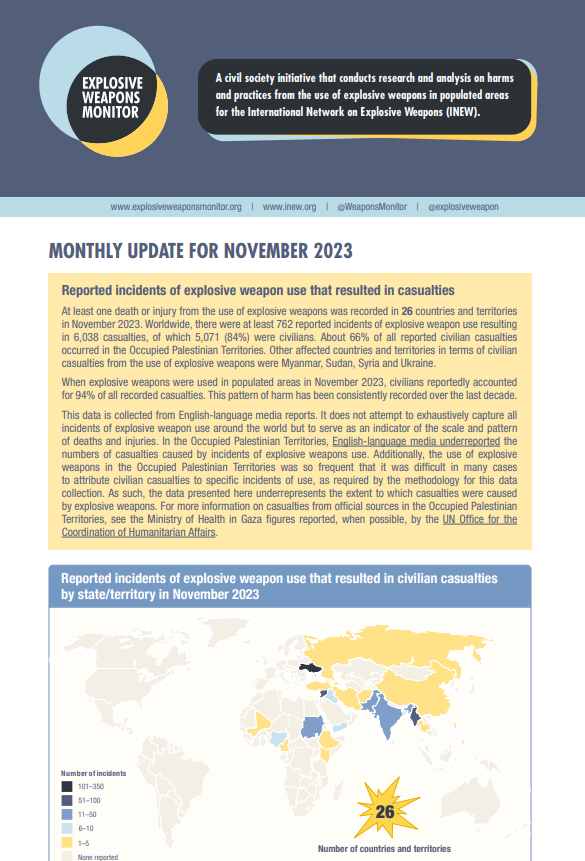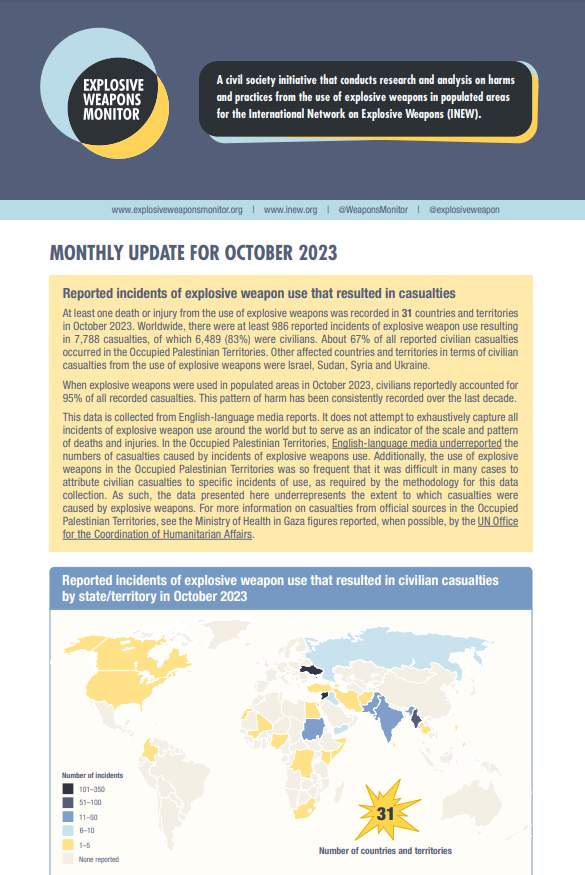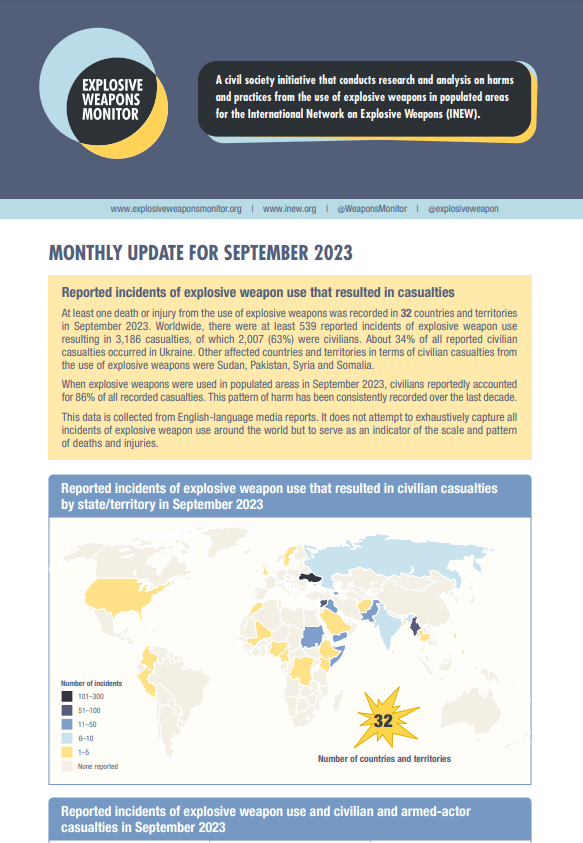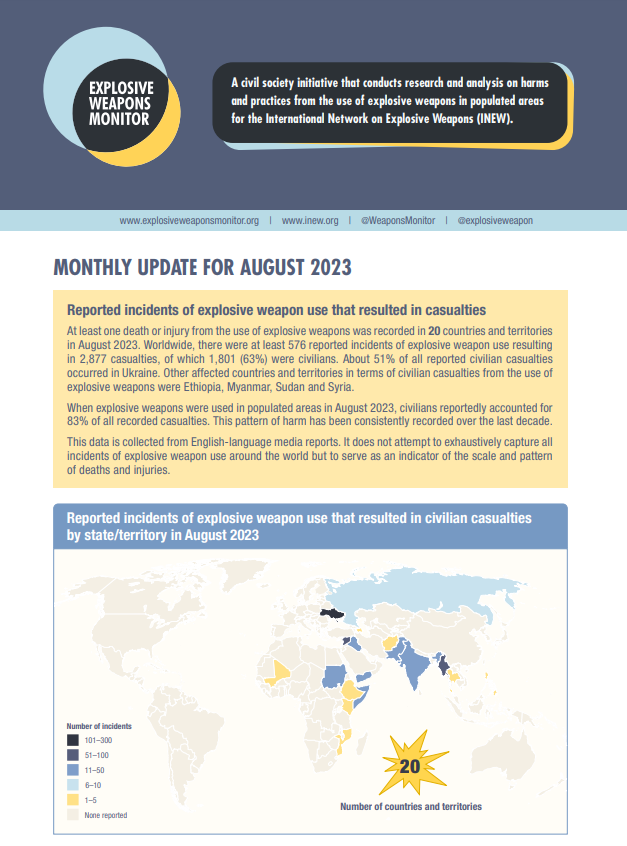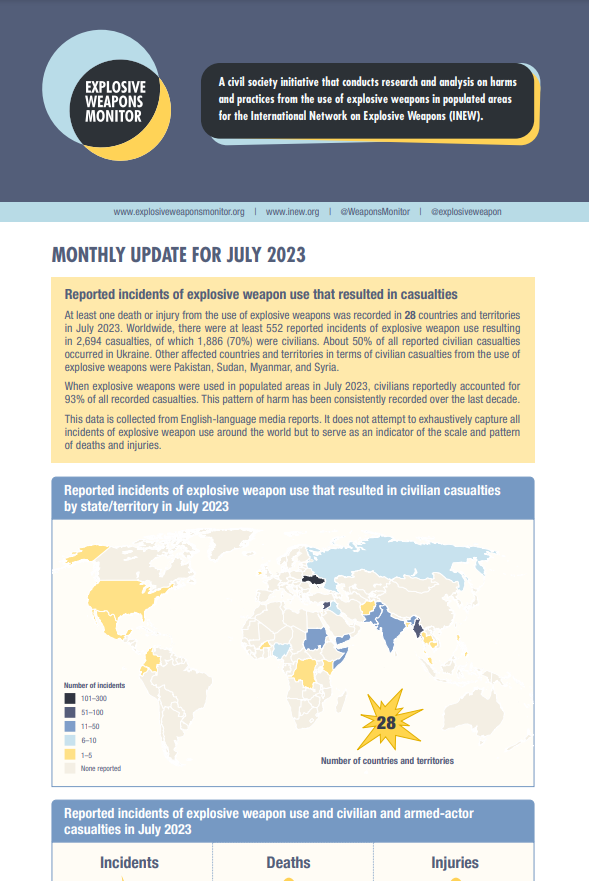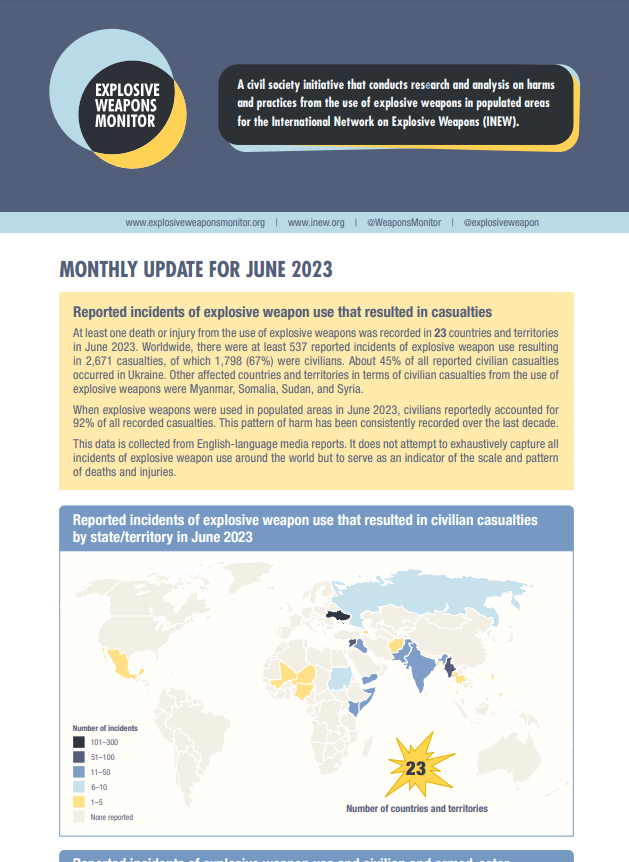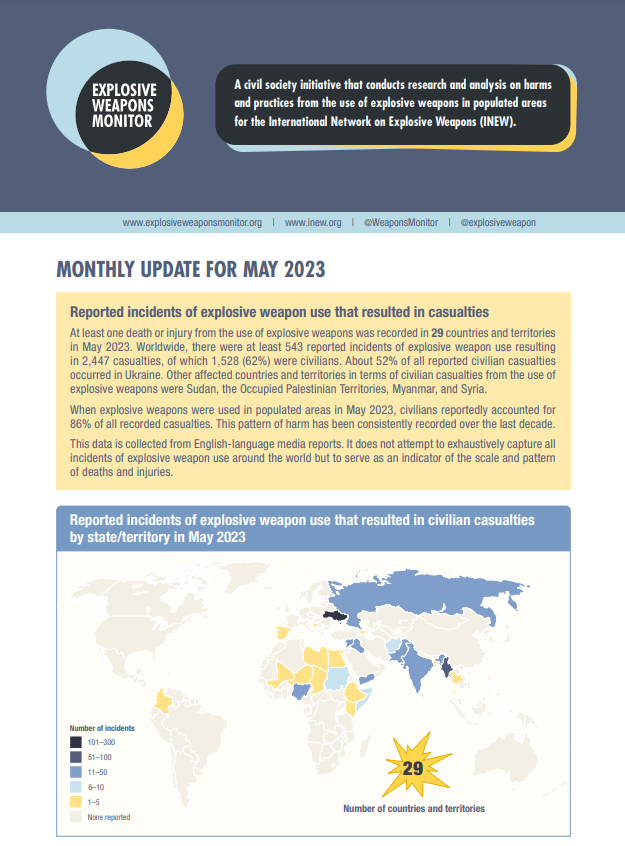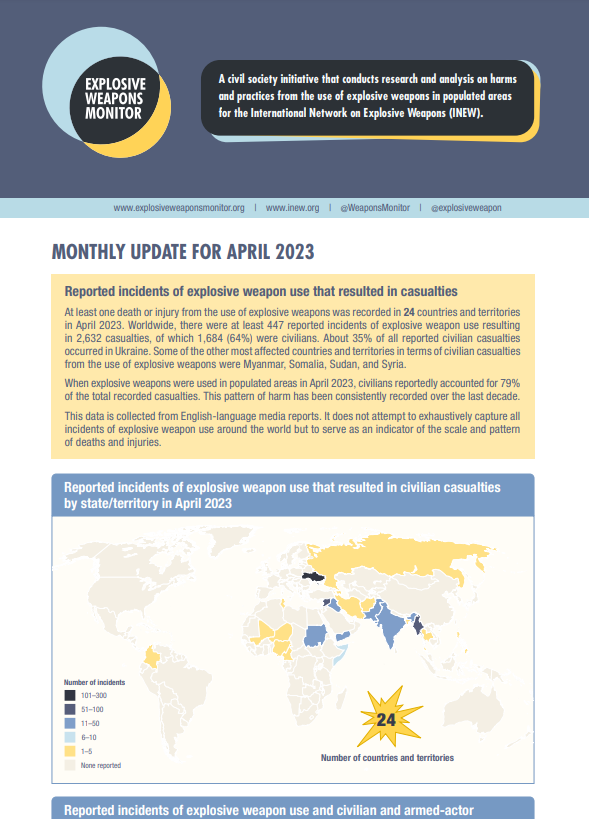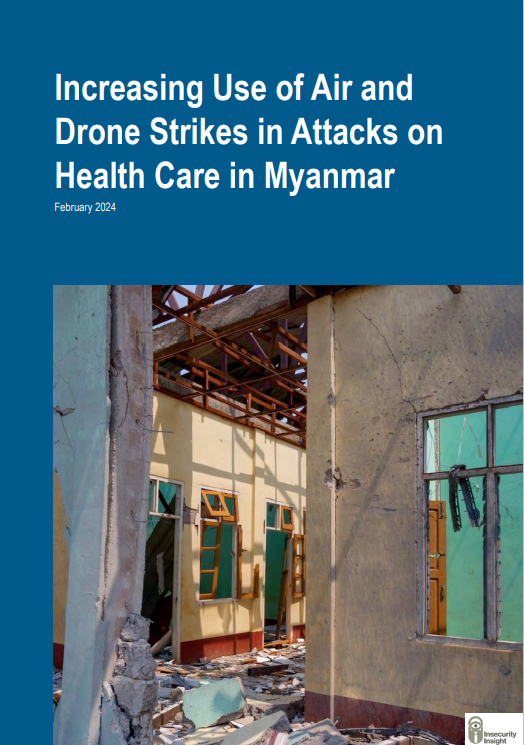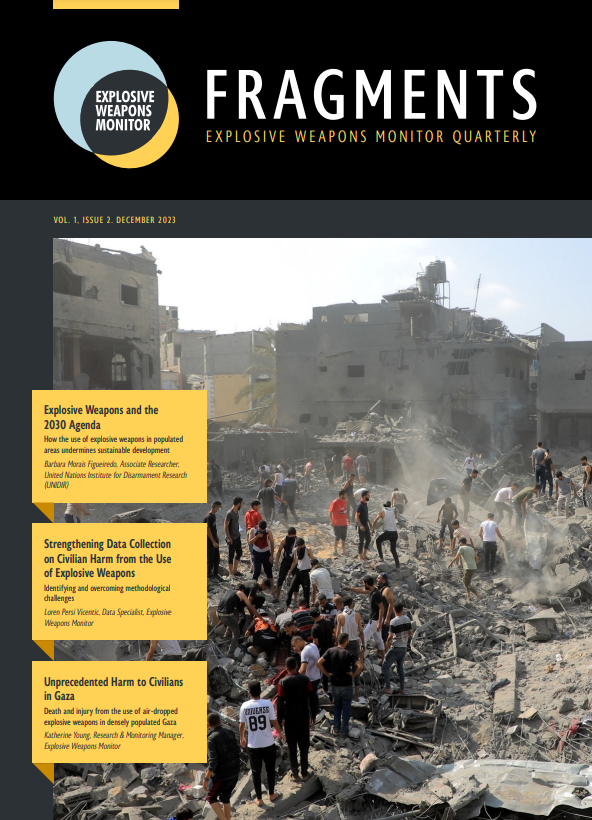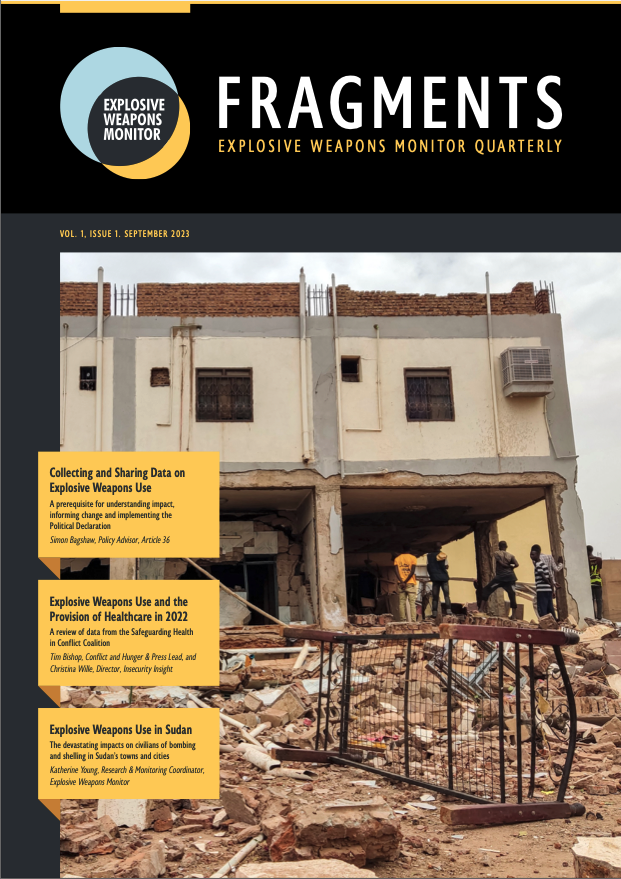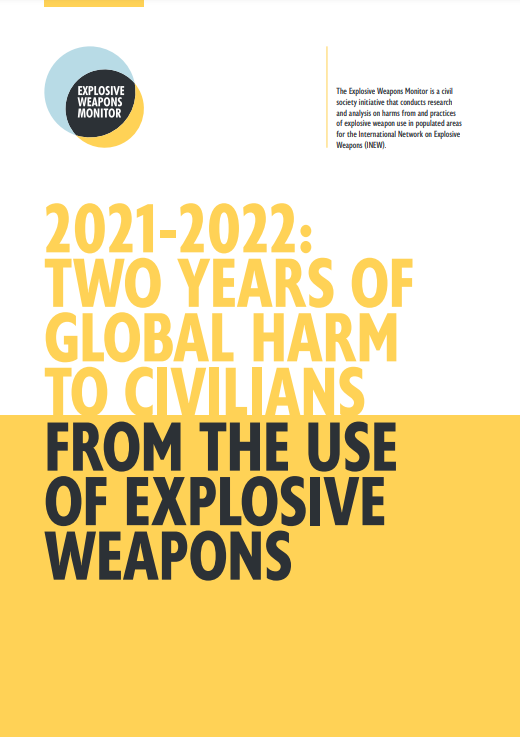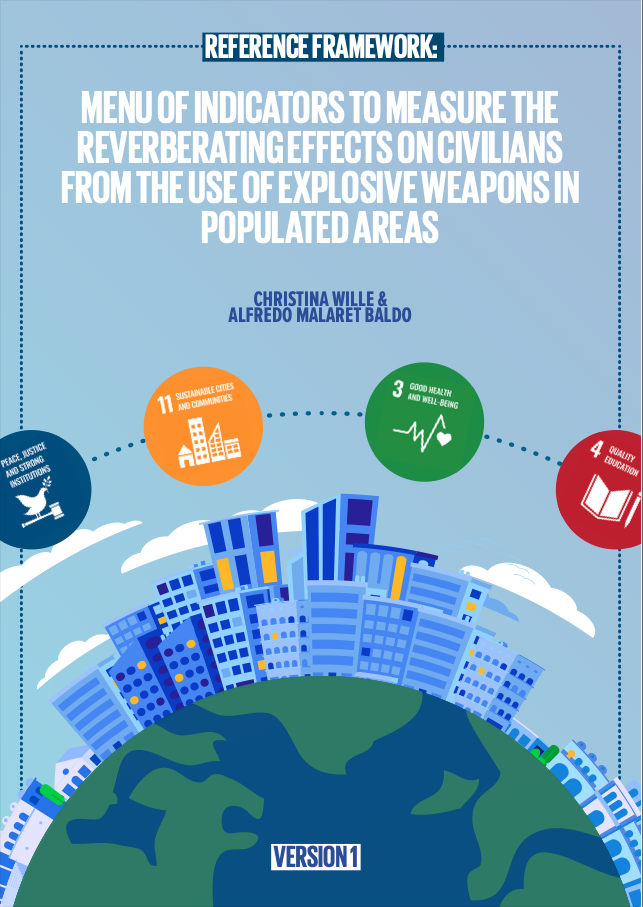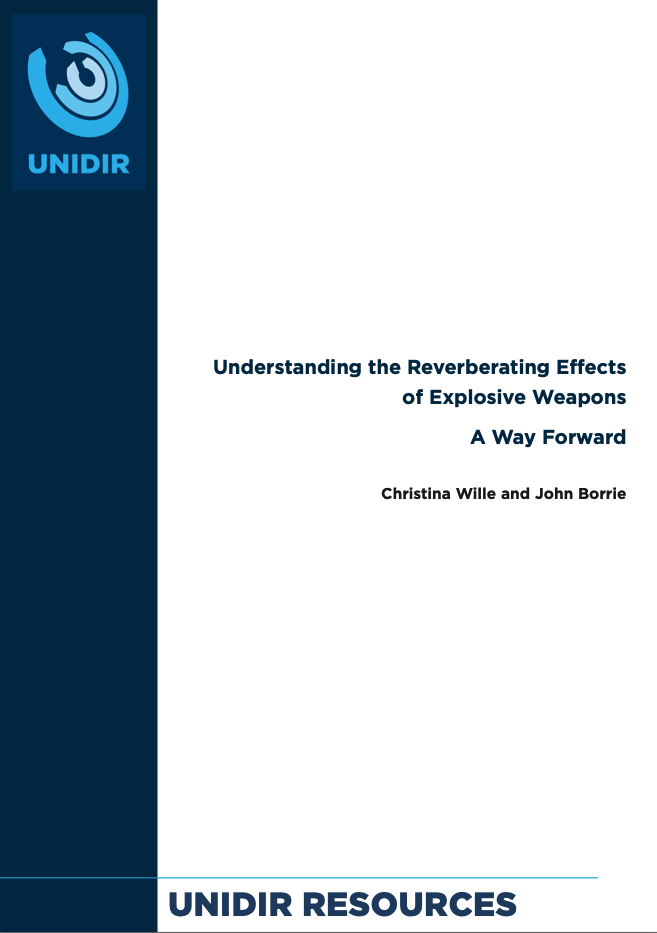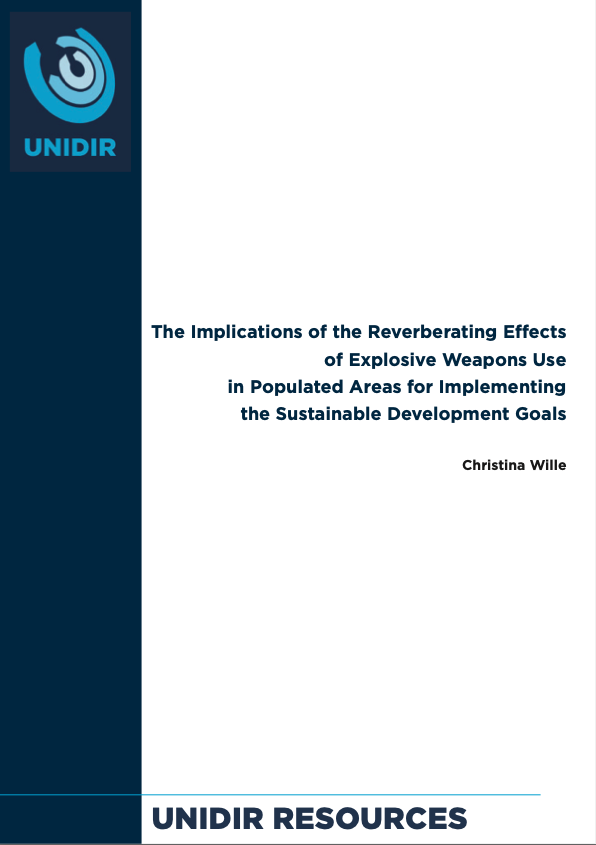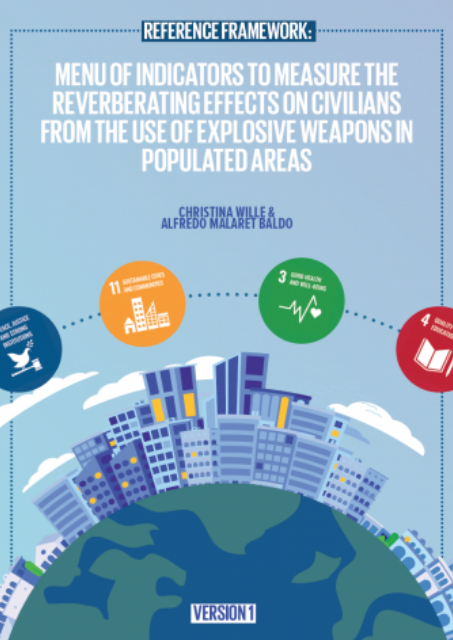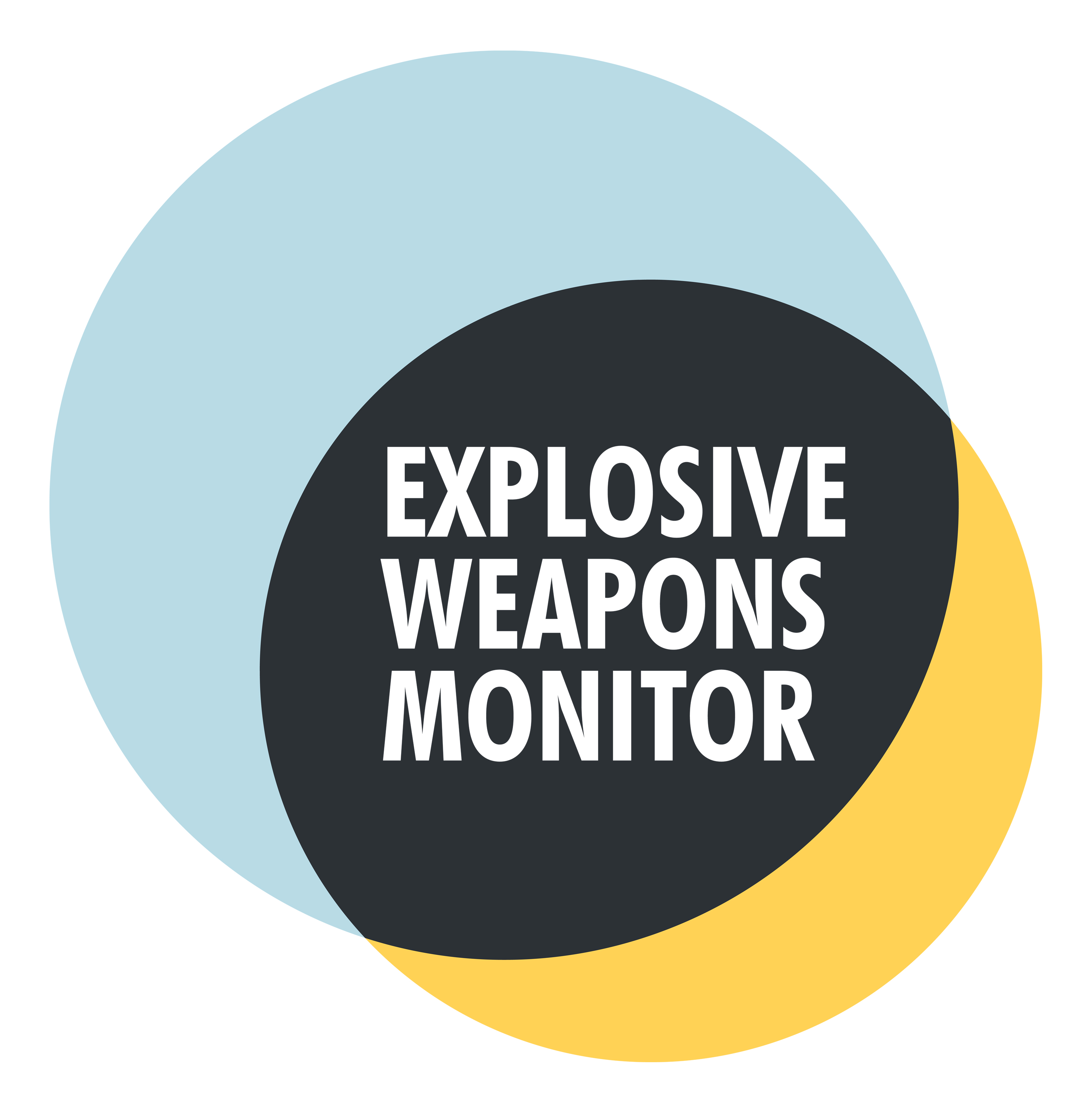Insecurity Insight conducts a variety of activities improving understandings and raising awareness of the impacts of explosive weapons use in populated areas. These include providing data for the Explosive Weapons Monitor, an initiative that conducts research and analysis on harms and practices from the use of explosive weapons in populated areas for the International Network on Explosive Weapons (INEW). We also monitor and analyse the use of drone delivered explosive weapons and Insecurity Insight Director, Christina Wille, has authored and co-authored a series of reports for the United Nations Institute for Disarmament Research concerning the reverberating effects of explosive weapons. Further information about our work in this area is available below.
- Home
- About us
- Press Releases
- Projects
- SIIM
- Security Incident Information Management (SIIM) (EN)
- Security Incident Information Management (SIIM) FR
- Security Incident Information Management (SIIM) (ES)
- Security Incident Information Management (SIIM) AR
- SIIM in NGO Security Collaboration
- Toolkit: Evidence that Protects Health Care
- Support for Advocacy
- Mobile Guides and Podcasts
- Mobile guides on security
- Research partnership
- Concept development
- Information
- Country Pages
